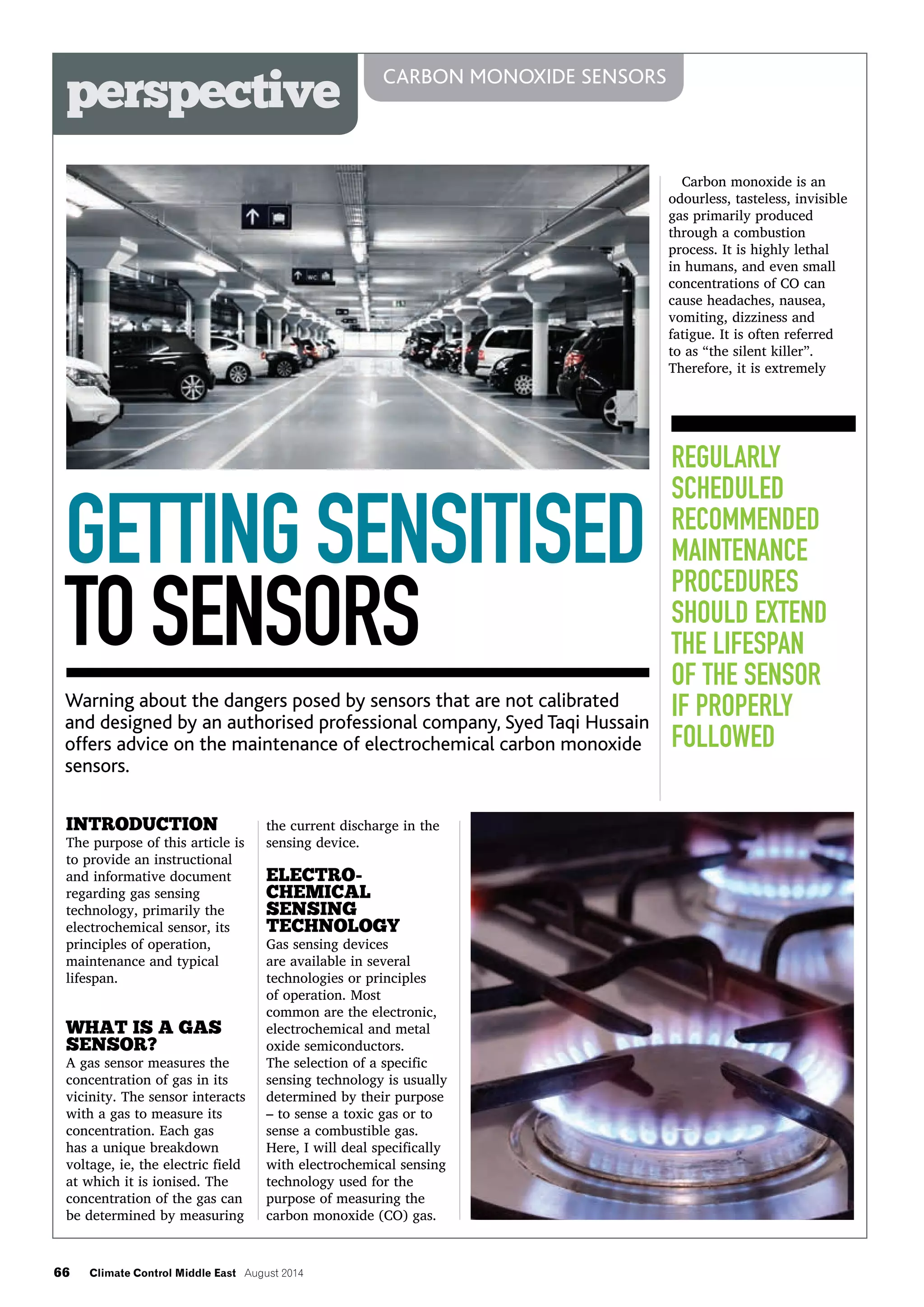Electrochemical carbon monoxide sensors require regular maintenance to function properly and maximize their lifespan. They work by measuring the current produced from oxidation and reduction chemical reactions between electrodes and electrolytes when exposed to carbon monoxide gas. Typically, electrochemical gas sensors can operate for one to three years, but following manufacturer recommended calibration procedures every six months can extend their lifespan to five to seven years. It is important to calibrate the sensors regularly given the toxicity of carbon monoxide and potential safety consequences if the sensors provide inaccurate readings over time.

